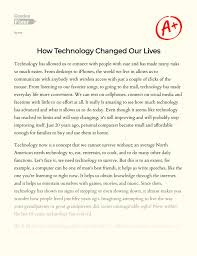The Impact of Technology on Speech
Technology has revolutionized the way we communicate, including the way we speak. From voice-activated assistants to video conferencing, technology has significantly influenced how we use our voices in everyday life.
One of the most notable impacts of technology on speech is the rise of voice recognition software. This technology allows us to interact with our devices using spoken commands, making tasks such as setting reminders, sending messages, and searching the internet more convenient than ever before.
Furthermore, video conferencing tools have transformed the way we communicate with others remotely. Whether it’s for work meetings, virtual events, or catching up with loved ones, these platforms enable us to see and hear each other in real-time, bridging distances and enhancing our connections.
However, while technology has brought many benefits to how we use speech, it also presents challenges. The prevalence of text-based communication, such as messaging apps and social media platforms, has led to a shift away from face-to-face conversations. This can impact our ability to pick up on non-verbal cues and nuances in communication that are essential for effective interaction.
Additionally, concerns have been raised about the impact of technology on speech development in children. Excessive screen time and reliance on digital devices may hinder language acquisition and social skills development in young individuals.
In conclusion, technology has undoubtedly transformed the way we speak and communicate with each other. While it offers numerous advantages in terms of convenience and connectivity, it is essential to be mindful of its potential drawbacks and strive for a balance between digital interactions and traditional forms of communication.
Exploring the Impact of Technology on Speech and Communication: Key Questions Answered
- How has technology impacted speech?
- What role does voice recognition software play in changing how we speak?
- How has video conferencing technology influenced communication?
- What are the challenges associated with technology and speech communication?
- What concerns exist regarding the impact of technology on children’s speech development?
How has technology impacted speech?
Technology has had a profound impact on speech in various ways. The rise of voice recognition software and voice-activated devices has revolutionized how we interact with technology using our voices. Video conferencing tools have made remote communication more personal and engaging, transforming how we speak and listen to others in virtual settings. However, the prevalence of text-based communication through messaging apps and social media platforms has altered the way we express ourselves verbally, potentially affecting our ability to interpret non-verbal cues and nuances in communication. Overall, technology has both enhanced and challenged traditional forms of speech, highlighting the importance of understanding its multifaceted impact on human interaction.
What role does voice recognition software play in changing how we speak?
Voice recognition software plays a significant role in changing how we speak by enabling us to interact with technology using our voices. This technology has revolutionized the way we communicate with devices, allowing us to issue commands, dictate messages, and perform various tasks without the need for manual input. Voice recognition software has not only increased convenience and efficiency but has also influenced our speech patterns and habits as we adapt to speaking naturally to our devices. Its integration into everyday devices like smartphones, smart speakers, and cars has made voice communication a common practice, shaping the way we use language in the digital age.
How has video conferencing technology influenced communication?
Video conferencing technology has had a profound impact on communication by breaking down barriers of distance and enabling real-time interactions regardless of physical location. It has revolutionized the way we connect with others, allowing for face-to-face conversations, virtual meetings, and collaborative work sessions without the need for everyone to be in the same room. Video conferencing technology has enhanced communication by providing visual cues, fostering engagement, and promoting more personal interactions, ultimately improving productivity and fostering stronger relationships in both personal and professional settings.
What are the challenges associated with technology and speech communication?
The challenges associated with technology and speech communication are multifaceted. One key issue is the potential loss of face-to-face interactions due to the prevalence of text-based communication, which can hinder the development of interpersonal skills and emotional intelligence. Additionally, the reliance on voice recognition software and virtual assistants may lead to privacy concerns as personal conversations are recorded and stored. Moreover, the digital divide exacerbates disparities in access to technology, limiting some individuals’ ability to effectively communicate using modern tools. It is crucial to address these challenges proactively by promoting digital literacy, fostering meaningful connections, and prioritizing privacy and security in tech-enabled speech communication.
What concerns exist regarding the impact of technology on children’s speech development?
One common concern regarding the impact of technology on children’s speech development is the potential negative effects of excessive screen time and digital device usage. Some experts worry that prolonged exposure to screens and reliance on technology for communication may hinder children’s language acquisition and social skills development. In particular, the lack of face-to-face interactions and reduced opportunities for verbal communication in a digital-centric environment could impede children’s ability to practice speaking, listening, and interpreting verbal cues effectively. It is crucial for parents and caregivers to monitor and regulate children’s screen time to ensure a healthy balance between tech use and engaging in activities that promote language development through real-world interactions.
Tags: language acquisition, messaging apps, non-verbal cues, nuances in communication, remote communication, social media platforms, social skills development, speech, speech development in children, speech on technology, technology, text-based communication, video conferencing tools, voice recognition software, voice-activated devices
